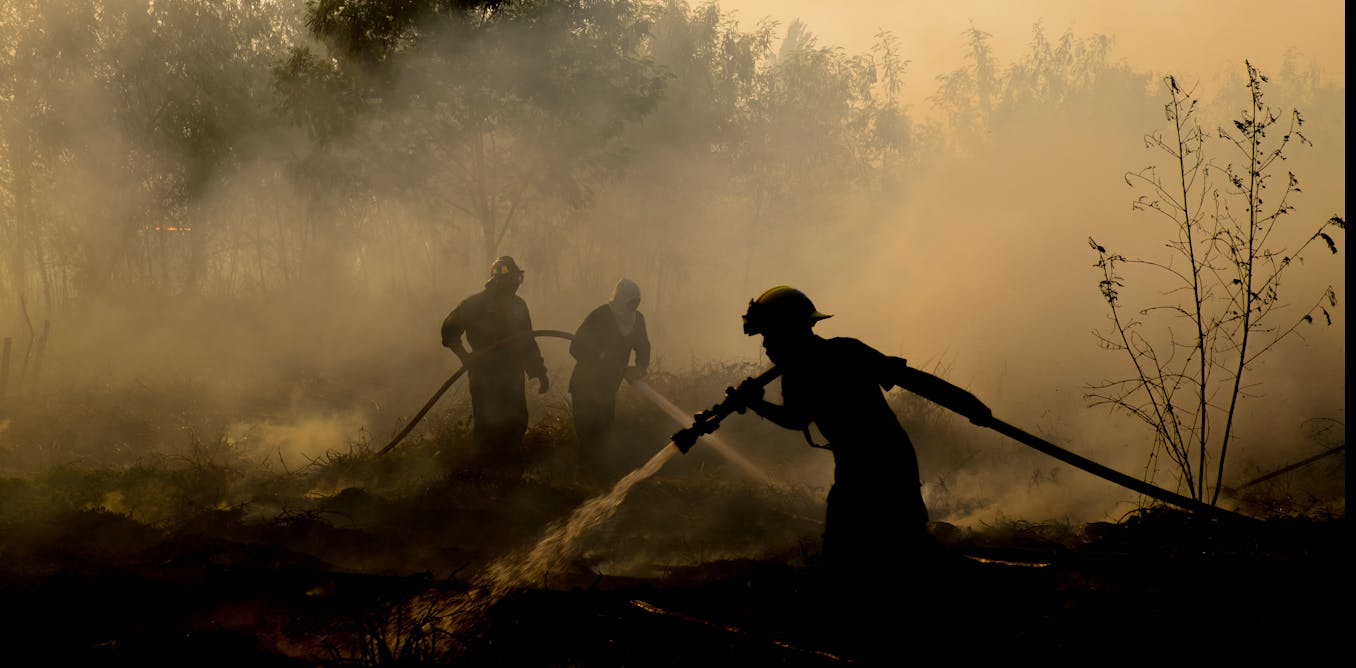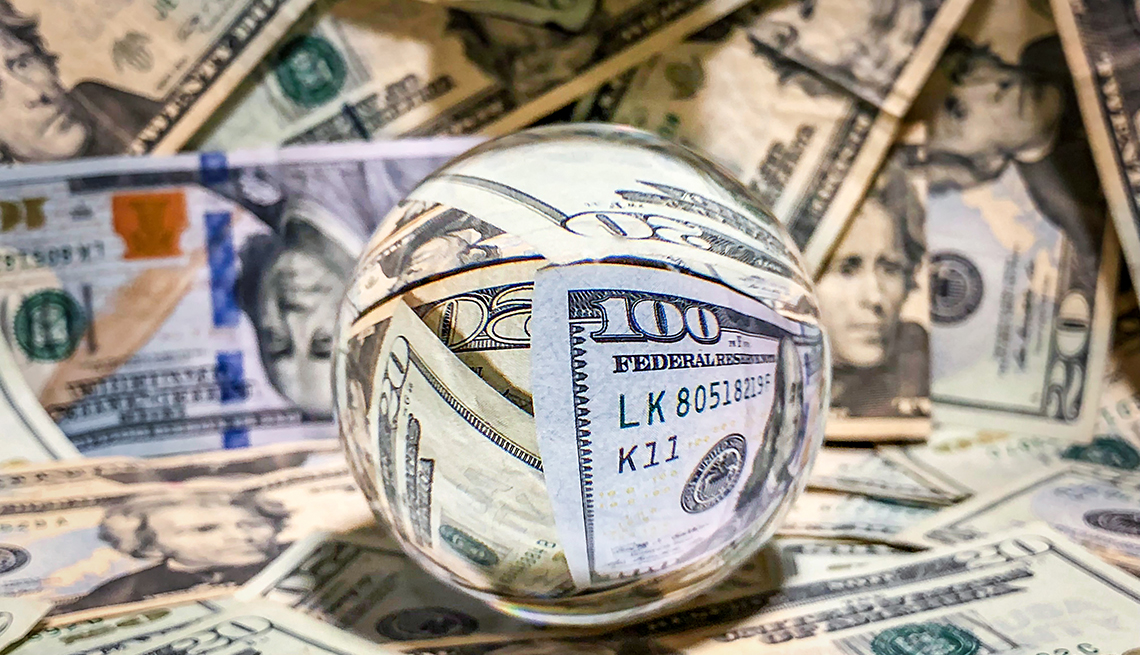
- Select a language for the TTS:
- UK English Female
- UK English Male
- US English Female
- US English Male
- Australian Female
- Australian Male
- Language selected: (auto detect) - EN
Play all audios:
If you ever wondered what the weather might look like should global average temperatures rise 2C degrees above pre-industrial levels – the critical warming threshold the Paris Agreement
seeks to prevent us from reaching – take your mind’s eye back to Friday 17 November. That day, for the first time since records began, global surface air temperature briefly reached 2.07C
above pre-industrial levels. While this does not mean that we have breached the global climate agreement’s target, the frequency at which the mercury jumps over that line raises serious
concern. As this year’s global annual climate talks, COP28, unfolds, one could hope that this would shock governments into strengthening their climate goals. But this point in time ought to
be a moment of reckoning for companies, too. The data, however, indicates otherwise, as executives lie about their environmental, social and governance (ESG) efforts and cut green spending
further. 20 SUSTAINABILITY SCHEMES UNDER THE MICROSCOPE Thankfully, there are many ways in which companies can change course, starting at an internal level with sustainability schemes. For
the stake of clarity, we define the latter as organised initiatives to provide sustainability guidance to companies through principles, frameworks, guidelines, and standards. My recent
research with James Demastus assessed 20 of the most used environmental sustainability schemes for their effectiveness in advancing sustainability, including the UN Sustainable Development
Goals, the Global Reporting Initiative, and Certified B Corporations. The United Nations’ Sustainable Development Goals (SDG) are among the most famous. By contrast to other schemes, SDGs
are country-level initiatives to which businesses can choose to contribute to or not. Companies are free to identify any of the 17 SDG that are aligned with its goals, such as affordable and
clean energy, climate action, or sustainable cities and communities, and carry out sustainable practices that will contribute to reaching the global SDG goal. Note that participating
companies are not held up to any SDG requirements or accountability frameworks, instead enjoying the warm glow of taking part in a global movement for sustainability. Sustainability
reporting guidelines are another type of scheme. In the EU, annual sustainability reporting is required for all large companies. When a company writes a sustainability report to share its
sustainability activities, such as its public commitment to help achieve the SDG, they often use a reporting template, such as the Global Reporting Initiative (GRI). The GRI template has
been adopted by more than 10,000 companies worldwide and is the most widely used sustainability reporting framework. The GRI specifies what non-financial information that companies should
disclose, such as energy usage, waste production, greenhouse gas emissions, impact on biodiversity, and environmental compliance. However, there are numerous other sustainability reporting
templates and it is not mandatory to follow the GRI format. As an example, Unilever and Audi] both use the GRI reporting guidelines. In its environmental sustainability disclosure,
Unilever’s 2021 sustainability report states that it has achieved a 64% reduction in operational carbon emissions and is pursuing a target of zero operational carbon emissions by 2030.
Company sustainability certification standards are another type of scheme. Certified B Corporation (B Corp) guides companies to prioritise workers, community, and the environment alongside
profit. The Body Shop and Tony’s Chocolonely are both Certified B Corps. B Lab, the organisation that oversees B Corp certification, reports that Tony’s Chocolonely does quite well in
meeting the B Corp standards for environmental management, air and climate impacts, and land and biodiversity impacts, but has room for improvement in the area of water impacts. It should be
added that there is significant overlap in environmental sustainability scheme topics and the above schemes aren’t exclusive. In my career, I’ve seen companies use half a dozen or more
schemes at a time. WEAK, INCREMENTAL BENEFITS Our research concluded that all 20 of the commonly used schemes in our study aligned with various forms of weak sustainability that promote
incremental sustainability progress and continue to advocate for a growth-oriented economy. For example, most schemes only consider a company’s internal or operational carbon emissions and
ignore the supply-chain emissions generated by a company’s choice of materials, suppliers, and transit options – which they can account for more than 90% of a company’s carbon emissions.
Consider Unilever’s 2021 sustainability report, which shows the company’s internal operational emissions for the year were 710,740 tonnes of carbon dioxide equivalents. However, the
company’s supply-chain emissions for the year amounted to 61,007,131 tonnes, or 98.8% of the company’s total (operational plus supply chain) emissions. Furthermore, many schemes are vague
and offer no guidance on how to reduce operational carbon emissions. Coming back to the three schemes cited at the top of the article, SDG requires countries to “take urgent action” to
address climate change, the GRI requires companies to simply calculate and report greenhouse gas emissions, and B Corp certification demands that companies to “take action in accordance with
science”. In practice, companies are left to navigate the options available and decide on the best course of action. As a result, companies often take the easy route of buying carbon
offsets, which have come under great scrutiny as being worthless or even downright polluting, instead of companies tackling the hard work of reducing internal operational emissions. Aware of
such trends, the EU has recently passed legislation that requires companies making climate-related claims to disclose if they are slashing internal operational emissions or relying on
carbon offsets. FORWARD-LOOKING SCHEMES On a positive note, our research identified five schemes that performed better than others, including frameworks centred on concepts such as the
circular economy, doughnut economics or planetary boundaries, and The Natural Step framework, and the certification standard scheme ISO 14001. The circular economy seeks to minimise
companies’ carbon footprint by reducing demand for new materials, slash waste and increase products’ durability overall. Among this school of thought’s notable followers is the EU with its
Circular Economy Action Plan, which it expects will contribute 0.5% additional GDP growth and 700,000 new jobs by 2030. Doughnut economics is a theoretical model that defines maximum
ecological limits that we should not exceed and minimum basic social needs that we should meet; the goal is to stay between these two limits to maintain a flourishing and healthy planet and
society. Amsterdam, Copenhagen, Brussels, and Berlin are among its early adopters. Meanwhile, the model is proving a harder sell for businesses, who are just beginning to explore how it
could help them (re)design business for sustainability. Planetary boundaries is a framework that identifies nine processes that regulate earth systems, such as climate change and ocean
acidification, and researchers quantified those processes to determine the boundaries within which humans can comfortably live. Governments and businesses have taken interest in how to stay
within those boundaries and, more importantly, how to prepare for future impacts from breached boundaries. Hitachi has publicly committed to keeping its corporate activities within planetary
boundaries with a focus on “growth within the limits”. Yara also reports that it is working to respect planetary boundaries within its agricultural supply chain, especially through the
increased efficiency of nutrients. The Natural Step (TNS) framework was started over 30 years ago in Sweden and was the first to develop a shared definition, vision, principles, framework,
and process for companies to begin the sustainability journey. Nike was an early adopter of The Natural Step through its Reuse-a-Shoe program to take back worn shoes for recycling; the
program continues today. Scandic Hotels also began its sustainability work under the advisement of The Natural Step and continues to follow TNS principles: do not degrade the earth,
over-extract from the Earth’s surface, produce too much waste, or interfere with individuals’ capacity to meet their own needs. BEST CERTIFICATION STANDARD SCHEMES One established
certification scheme also stood out: ISO 14001, an environmental management system certification for companies to measure and improve environmental impact. Companies select metrics relevant
to their operations, such as paper usage, electricity usage, and the weight of waste sent to the landfill. Toyota Europe and Swebor are both ISO 14001 certified, meaning that they have
procedures in place to measure and manage environmental impacts of company operations. Swebor states certification leads to less waste, increased use of renewable resources, and increased
efficiency. The other schemes not mentioned in the study, such as the European Commission’s Eco-Management and Audit Scheme (EMAS), the United Nations’ Global Compact, and the Carbon
Disclosure Project, were more oriented toward sustaining business rather than sustaining our human habitat.







:max_bytes(150000):strip_icc():focal(319x0:321x2)/people_social_image-60e0c8af9eb14624a5b55f2c29dbe25b.png)